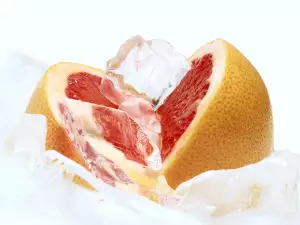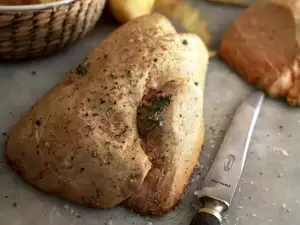Figs are the fruit of the fig tree that grows in tropical, subtropical, and less frequently, in temperate climates. The tree is from 3 to 10 meters in height, its leaves are large, and the fruits have the form of small bags from 3 to 5 cm big. Fig fruit’s color changes from light to dark green and at ripening - brown.
History of figs
Evidence of figs has been found in excavations of Neolithic developments, dating back to 5000 BC. The ancient Greek civilization prized figs and knew almost 29 varieties of them. Legend has it that the fig tree is an autumn fruit that was discovered by the Greek goddess Demetris and the fig tree is still considered sacred in many parts of the Mediterranean. The Romans thought that figs were sent by Bacchus, god of wine, who is almost always depicted with a crown of fig leaves.
Sourced from West Asia, figs were common in the Mediterranean region, being introduced by migrating people. Over time, their cultivation spread to western and central Europe, in areas ranging from Afghanistan in Asia, to Germany and even the Canary Islands. In the middle of the fifteenth century, figs are transferred to England and then the fig trees joined the rose gardens of wealthy households in China. European variety figs are transferred to India, Japan, South Africa and even Australia. In the new world, they arrived in 1560, but reached the U.S. in 1699, when the first figs were planted in Virginia.

Figs are perhaps one of the first fruits, to be dried and stored. In ancient Greece, the fig was considered as a valuable and sacred fruit, and their export was prohibited.
Mithridates, King of Pontus Greeks, announced figs as a cure for all ailments and it was mandatory for all his subjects to eat figs daily. Figs were awarded to the winners in the Greek Olympics. That the ancient Greeks and Romans worshiped figs very much, as evidenced by the widespread belief that figs are stores for nutrients and can be used to treat almost every disease known. Figs were favorite fruits of Cleopatra too.
Composition of figs
The content of vitamins in figs is very small, but in contrast, they have a very rich mineral content. They contain potassium, calcium, sodium, iron, magnesium and phosphorus. However, figs have moderate doses of vitamins - C, B1 and B6. Figs have a high content of fiber among other fruits and vegetables. Only one fig provides 20% of the recommended dose of fiber per day.

100 g of fresh figs contain 25 calories and 100 grams of dried figs has 100 calories.
Selection and storage of figs
Figs are one of the easiest to deem fresh fruits. For this reason, we recommend that you buy figs in limited quantities, which can be eaten in a day or two. When selecting figs, you should pay attention to their skin - as it should not have tears, but be soft and smooth. The color of the figs is brownish-green. The belly button located at the bottom must be dead, and through it, you can sneak droplets of nectar from the heart of the fruit. To the touch, the fruit should be slightly soft, but also to have some resistance when you try to change its natural form.

Figs and cooking
Figs are very sweet fruits, with a specific flavor that is reminiscent of walnuts. One of the most common applications of canned figs is making of jams and marmalades. Frozen and candied ones are rare, but in contrast, are imported from Turkey or Greece. Figs are delicious very raw, but their selling seasons are spring and summer.
Syrup of Figs is used for dressing on cakes. Fans of unusual flavors can combine figs with meat dishes or cheese. Many love chicken with mozzarella and figs.
From figs, make drinks, use them in muffins and pastries, cakes and other sweets. Add them to the composition of fruit salad and muesli, porridge and other healthy snacks.
Benefits of figs
Figs are really highly nutritious and contain almost all the nutrients required for the growth and development of the human body. Figs contain iron, potassium, beta carotene (anti-aging properties) and benzaldehyde (anti-cancer component) and flavonoids. They also contain a digestive enzyme. Containing these nutrients, figs are good for preventing constipation (with their high dietary fiber content), anemia, and prevention of cancer too.

A little known fact is that figs contain the chemical psoralen, which has been used in traditional medicine for thousands of years to treat diseases associated with skin pigmentation.
The nutrients contained in figs are particularly useful for our stressful lives today. A quarter cup of figs provides almost one-fifth of the daily required dose of dietary fiber for good digestion. It also provides 1, 2 mg (6%) iron, 53 mg (6%) of calcium and 244 mg of potassium(7% of daily intake), which your body needs. Figs contain no fat, sodium and cholesterol.
They are also one of the best alternatives to sugar. Pureed figs can be used as a sweetener in many recipes.
Dangers of figs
In rare cases, allergies to the delicious fruit can occur. In suspected hypersensitivity, consult with an allergist.
Figs contain oxilates - natural compounds which if released into the body in large concentrations can crystallize and cause health problems. Dried figs are treated with sulfites and sulfur dioxide to preserve them for a long time. If you are sensitive to sulfur products, be careful.



















Comments